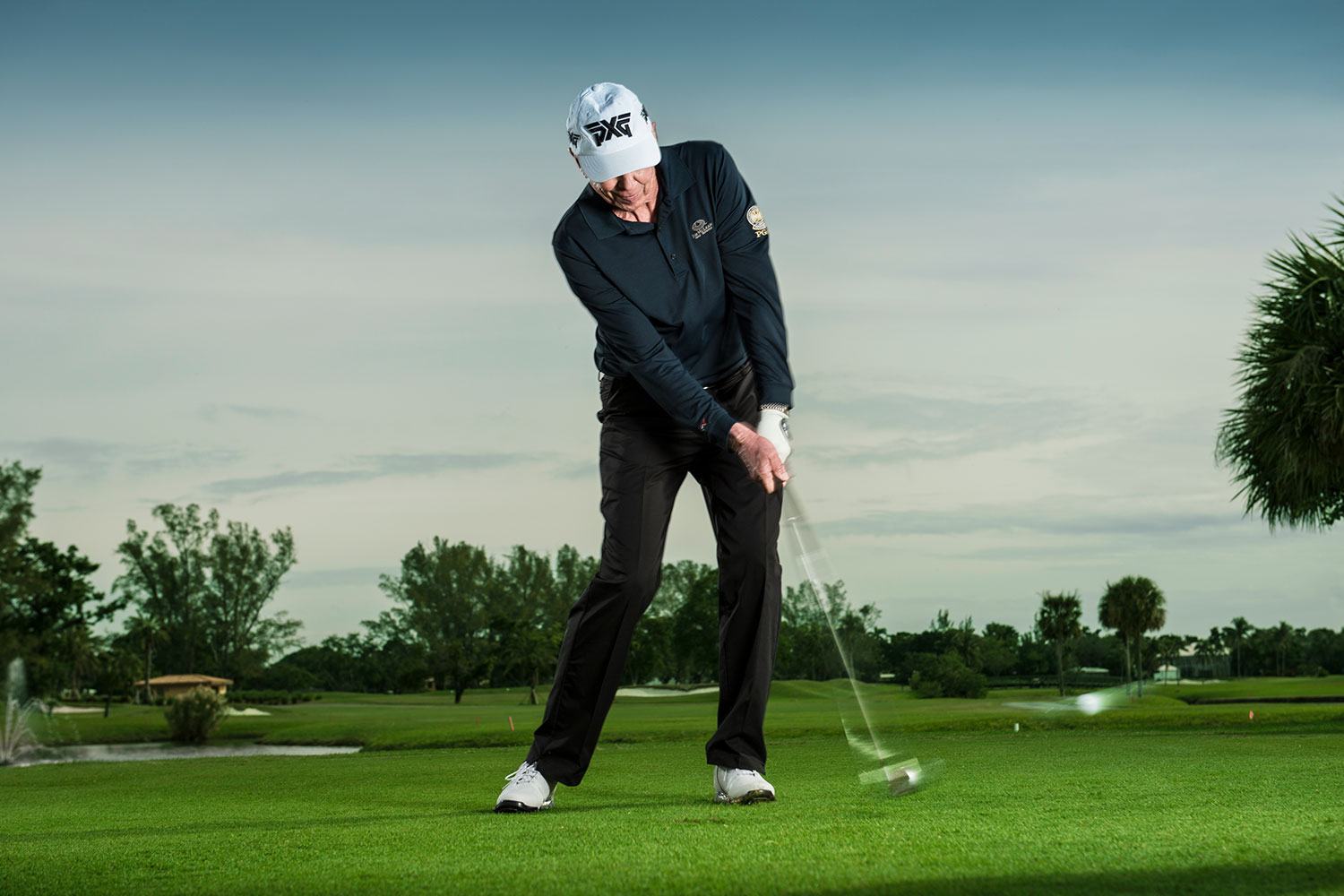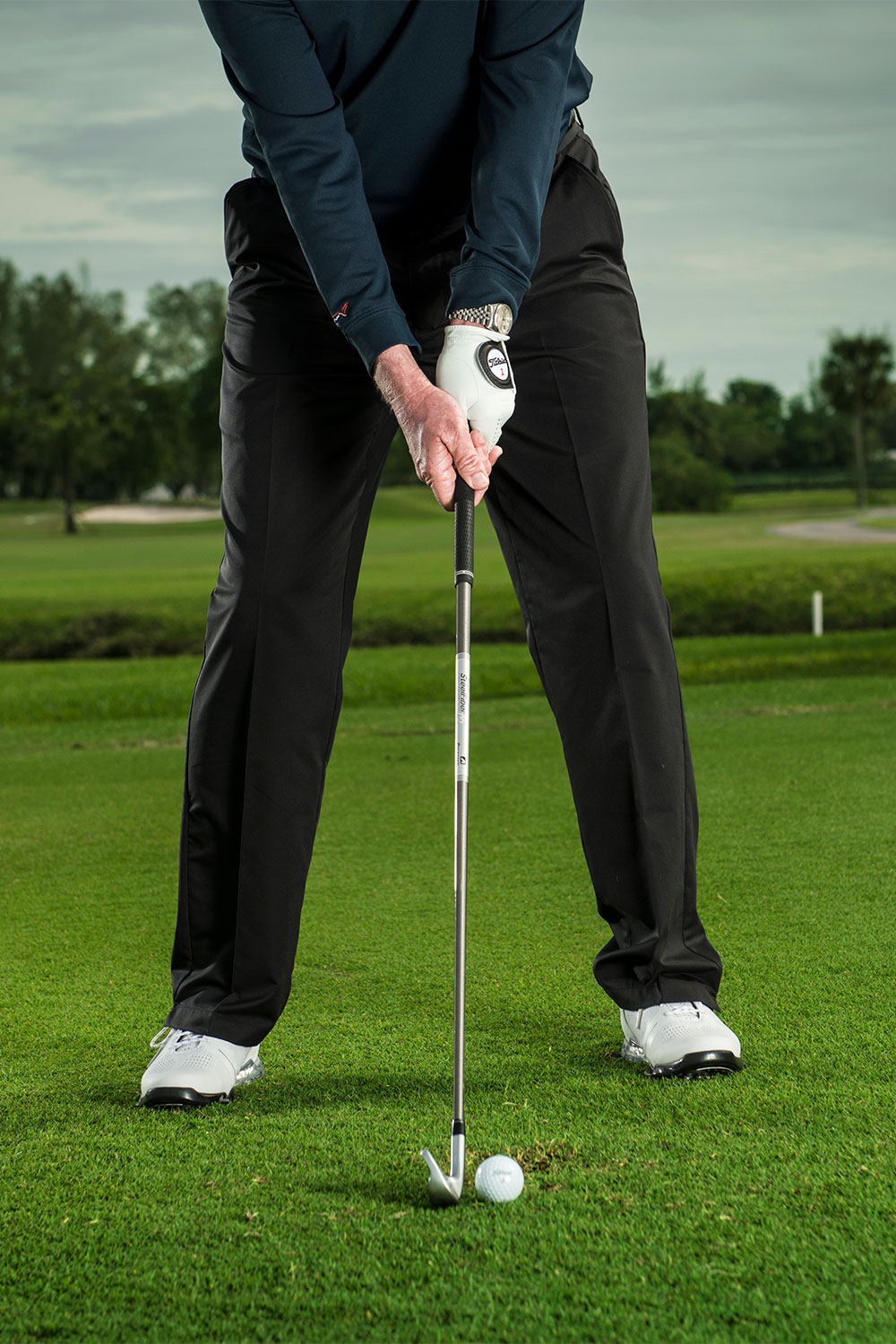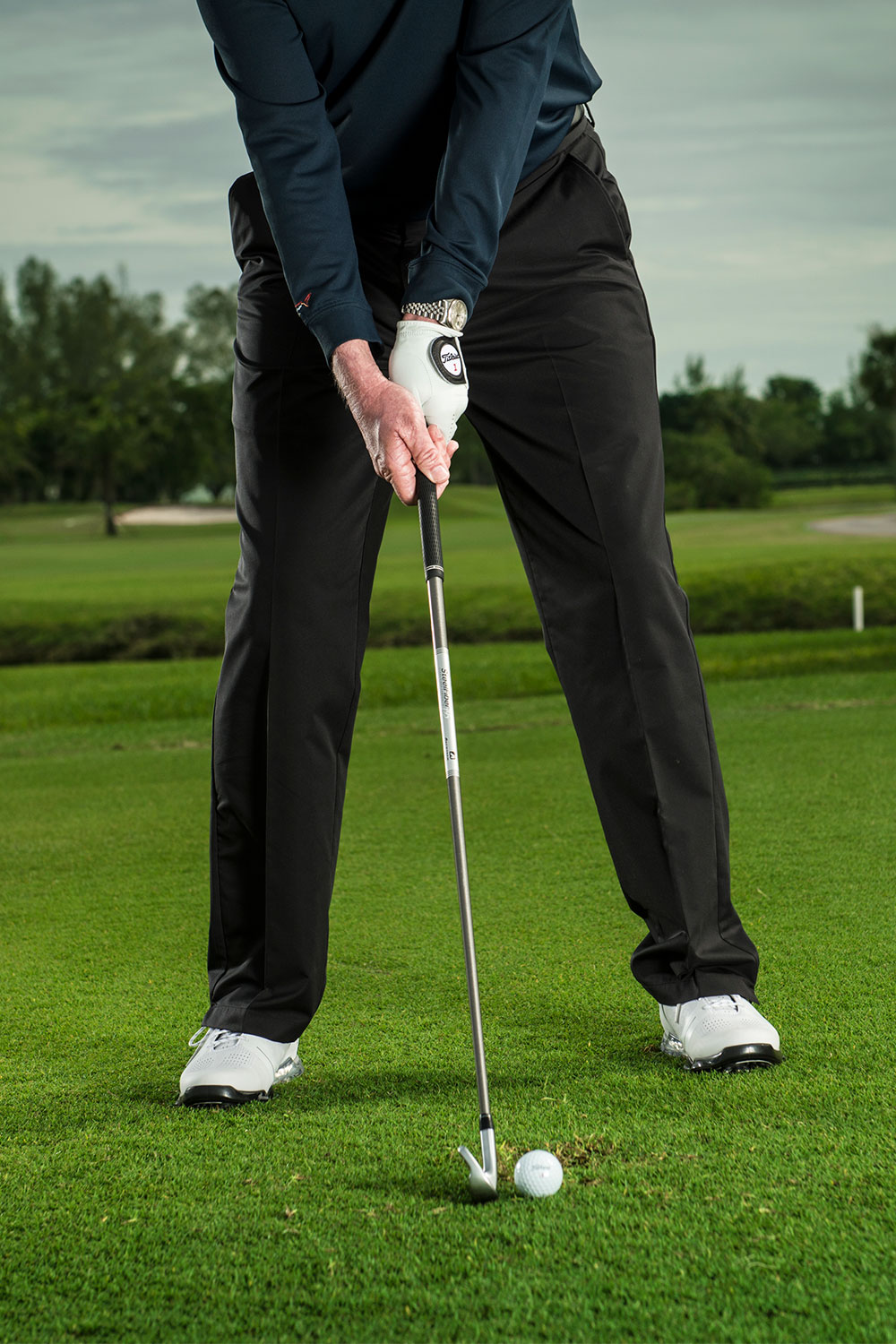Sergio Garcia is known for being an exceptional ball-striker, and the way he gets the clubhead to lag behind the movement of the arms and body in the downswing helps him hit it pure. It can improve your swing, too, so I’m going to show you how to create it.
If you’re not sure what lag is, look at this photo of me in the downswing. My hands are about to pass over the top of the ball while the clubhead has a way to go before contact. Simply put, the clubhead lags behind the movements of my body and arms. This helps get the club moving its fastest where it counts, through the impact area. That’s why lag is so valuable to hitting good shots.
The problem is, many golfers don’t understand how to make this happen. Heck, I’ve even heard Sergio misidentify the source of his pronounced lag. Sergio said it feels as if he’s yanking the handle of the club downwards like “pulling a chain”. Though that might be what he feels, it’s really not what’s going on. He’s not holding off the release of the clubhead with his hands. In fact, trying to create lag this way often results in bad misses. It creates tension and forces a last-second flip of the hands to try to close the clubface. Without that flip, it’s shank city.
What Sergio actually is doing to create lag is starting the downswing with his lower body. He has a free-flowing swing and seamlessly goes from backswing to downswing with his legs and hips before his arms, hands and club can do the same. He’s not pulling down, he feels pull. His arms are doing little more than dropping as his swing begins to change direction. In fact, his left arm stays connected to his torso in the downswing – that’s a key move.

When your lower body starts the downswing and the arms and hands stay relaxed, you’ll create lag. The unwinding of the lower body towards the target initially propels the swinging of the arms – just like Sergio does. The club eventually catches up and passes the body, but it happens much closer to impact [above]. And the closer that happens, the more potential there is to compress the ball. That’s why lag is so valuable. Even when you don’t find the sweet spot of the clubface, you’ll still have the potential to hit a decent shot because of the energy you release into the ball.
Another way to understand lag is to think of the motion created when painting a wall. When your hand is moving back and forth holding a paintbrush, what are the bristles doing? They’re lagging behind. This motion is similar to what you should feel in your hands if you lag the clubhead correctly. I’ve got a drill that hones this motion [below].
Remember, lag is a key facet of the golf swing. Just try not to get it by pulling the handle down. Let your lower body lead the downswing, which will set the clubhead in a trailing position. Do that, and you’ll start puring it just like Sergio.
– with Ron Kaspriske
Learning To Lag
One of my mentors, the late Ken Venturi, came up with this great analogy to get golfers to understand how to lag the club. It’s like the motion your hands make when you’re painting a wall. Whatever direction your hands move, the paintbrush does, too, but in a trailing position. That’s key.
To apply this concept when practising your golf swing, address a ball. As you start your backswing, let your hands and the handle of the club move away from the target before the clubhead does [bottom left]. Feel the clubhead lagging behind your hand action. Then, as you get to the top and start to swing down, again let the hands and handle move before the clubhead changes direction – just like the stroke of a paintbrush.


Two more downswing thoughts to create lag properly:
(1) Always start down with your lower body; lead foot pressing into the ground and the hips unwinding towards the target.
(2) Keep your lead arm connected to your chest. Feel like the arms are being pulled into
impact by your body rotation.
Jim McLean, a Golf Digest Teaching Professional, is located at The Biltmore in Coral Gables, Florida



